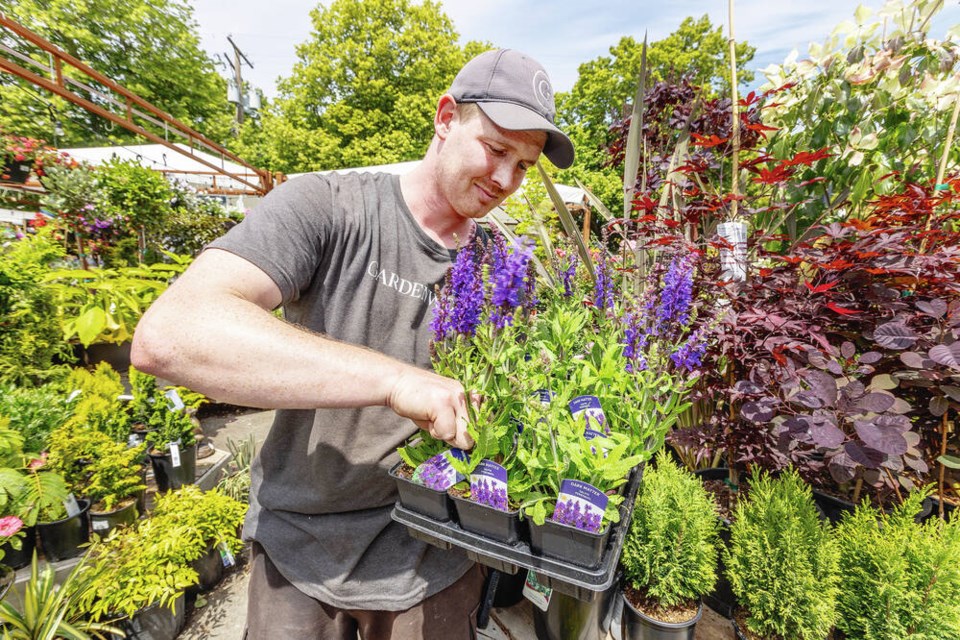This story is part of a series exploring the wide-ranging impacts of persistent drought conditions and climate change seen across the province in recent years.
Warmer temperatures and longer dry periods are hitting trees such as western red cedar and grand fir especially hard.
Some lose branches. Some fight to grow. And some just die.
Western red cedar and grand fir, both native species, are “really struggling,” said Alix Link, manager of urban forestry, natural areas and community stewardship in Saanich’s parks division.
If those trees are part of a large park, such as PKOLS (Mount Douglas) or Cuthbert Holmes, they tend to fare better than if they were planted alone, because they’re part of a broader ecosystem — other nearby trees will provide shade, for example.
One of the effects of chronic drought is that the municipality has to water newly planted trees for a longer period than in past years. New trees used to be watered for up to five years, but now it’s closer to seven years.
While it usually prefers to add native trees, the municipality will also plant other hardy tree species, such as varieties of sequoia.
To help develop the municipality’s urban forest, Saanich runs a Partnership Tree Planting program, where it will plant a tree for free on a property frontage and hand over responsibility for maintaining the tree to the property owner.
Residents can view a list of preferred trees of various sizes, many drought-tolerant, available from the municipality. Options aren’t just limited to western red cedar, Douglas fir and Garry oak — you can choose a Ginko biloba, a Venus dogwood, a Shademaster honeylocust and several varieties of maple, among other options.
Laurel Rassenti, who owns Russell Nursery in North Saanich with husband Nathan, said they ask customers about their gardens to help them choose an appropriate tree to take home.
Drought-tolerant trees still need to be watered, she said.
“They need to be really well-established and have their roots well-established in the soil before they are going to have that resilience,” Rassenti said. “Definitely for the first year you have to be really careful about watering it.”
Autumn is normally a good time to plant trees, but sometimes dry falls happen — as it did last year, she said.
A deep soaking once a week — or even better, twice a week — will encourage roots to sink deeper into the earth.
This past winter brought a surprise warm spell in January followed by low temperatures, which “did some crazy things to plants that we’ve never seen before,” Rassenti said.
That initial warm weather encouraged some plants to come out of dormancy in January. “Then we got that cold snap and it really set them back.”
That affected “a lot of very hardy plants that you wouldn’t even think twice about protecting,” Rassenti said. Some died and others were set back.
One example of a hardy tree is Dura heat river birch, developed to better withstand heat and drought, she said.
Rassenti also points to the native vine maple, which is smaller than some of the large maples and is a good candidate for drier conditions.
The Persian ironwood, which bursts into colourful foliage in the fall, is relatively drought-tolerant.
Native Garry oaks and arbutus are drought-tolerant but can be difficult to get established and are slow-growing, she said.
Some customers seeking to reforest large properties are planting giant sequoias, which are a little more resilient, Rassenti said.
Along with trees, vegetation in urban areas is stressed too.
Gardeners have lost plants during drought, especially in the past three summers, said Fraser Kovits, assistant manager of Gardenworks on Oak Bay Avenue.
Cold winters have taken their toll, prompting some gardeners to seek hardier plants “that they don’t have to keep replacing or spend more money on,” he said.
Colourful gardens can include many types of drought-tolerant plants, Kovits said, including echinacea or cone flowers, oriental poppies, rock roses and black-eyed Susans, which are “super tough.”
His own brightly coloured wallflowers bloomed until November last year, started flowering again March and haven’t stopped.
“Those are always pretty and very tough, usually in the winters as well as the drought. They can actually fill in quite fast.”
Olearia, or daisy bush, can handle salty spray from the ocean and is drought-tolerant and deer resistant, Kovits said.








